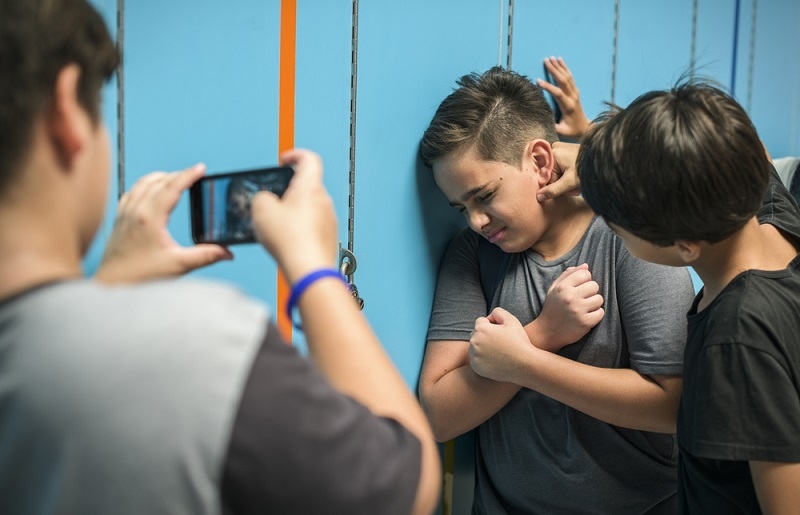How Parents Can Effectively Handle Bullying in Schools

When your child is caught in the middle of school bullying—whether as a victim or even the one dishing it out—every instinct screams for action. And rightly so. Bullying in schools isn’t “kids being kids.” It’s a pattern of targeted harm that chips away at confidence, disrupts learning, and can leave permanent emotional scars. So, if you're a parent watching this unfold, you're not overreacting. You’re stepping up—and here’s exactly how to do that without losing your mind or your child’s trust.
First: Understand What You're Dealing With
Before diving into solutions, let’s call bullying what it is. It’s not one bad day or a disagreement. School bullying is repeated, intentional behavior meant to hurt, humiliate, or control someone—physically, verbally, socially, or online. And it always involves a power imbalance.
It can look like:
- Physical aggression (pushing, hitting, tripping)
- Verbal attacks (name-calling, threats, relentless teasing)
- Social exclusion or rumor-spreading
- Digital harassment (cyberbullying via texts, social media, DMs)
The key? It’s calculated, it’s persistent, and it thrives in silence. Which is exactly why you—yes, you—need to be loud, present, and deliberate when it shows up in your child’s life.
Related reads: A Guide to Understanding Verbal Bullying and its Prevention
Spot the Signs Before They Spiral
Kids rarely come out and say, “I’m being bullied.” So you’ve got to read between the lines.
If your child is being bullied, you might notice:
- They’re suddenly “sick” every morning before school
- Grades dropping without clear reason
- Torn clothes, lost items, unexplained bruises
- Isolation, anxiety, or total mood shifts
If your child is the bully, the signs won’t be as subtle:
- Frequent fights or bossy behavior at home
- A pattern of controlling or mocking siblings or peers
- Bringing home things that don’t belong to them
- Dismissive attitude about hurting others
No shame in either. The goal isn’t to point fingers—it’s to fix the damn thing before it leaves a deeper mark.
Step One: Stay Calm, Even If You’re Boiling Inside
It’s natural to feel furious, heartbroken, or ashamed—especially when it’s your kid who’s being tormented or worse, causing harm. But your reaction sets the tone.
So, take a breath. Ground yourself before confronting your child or calling the school. The calmer and clearer you are, the faster you’ll get real answers and real change.
Talk to Your Kid—And Actually Listen
Start with this: “I heard something happened at school. You don’t have to tell me everything now, but I’m here, and I won’t judge.”
Let them talk. No interrupting. No overreacting.
If they open up, avoid the urge to fix everything instantly. They don’t need a savior—they need a safe space. Say things like:
- “That sounds really hard. I’m so glad you told me.”
- “No one deserves to be treated like that. Ever.”
- “Let’s figure this out together.”
And if your child is the bully? Don’t go soft—but don’t attack either. Say:
- “I heard something today, and I want to understand your side. Did it happen?”
- “You know I love you. But if you’re hurting others, it’s not okay. Let’s talk.”
Accountability + support = change. That’s your formula.
Teach Them What to Do When Bullies Show Up
You’re not raising a punching bag. You’re raising someone who knows their worth. So coach them through what to do when bullying in schools shows up again.
Give them scripts that are short and strong:
- “Cut it out.”
- “I’m not playing that game.”
- Walk away—head high, not bowed.
Roleplay it. Practice the tone. Teach them not to freeze.
And if your child is the one who’s bullying? Help them unpack the why. Are they angry? Jealous? Mimicking someone else? They won’t stop until they see the damage they’re doing—and feel something about it.
Help them rebuild that empathy. Ask:
- “How do you think that felt for them?”
- “If someone did that to you, how would you feel?”
If they don’t have the answers, dig until they do.
Get the School Involved—But Be Strategic
If your child’s being bullied and the school’s aware but brushing it off, don’t just send angry emails. Go in person. Request a formal meeting. Bring notes, timelines, screenshots—whatever backs your case.
Say:
- “I want to partner on this. What’s your process for handling this kind of behavior?”
- “What’s being done to keep my child safe?”
- “What accountability exists for the bully—and how do we know it’s being enforced?”
Hold them to their own policies. Don’t settle for vague promises. How to tackle bullying in schools starts with adults being held accountable, too.
And if your child is the bully? Get them into that room, too. Schools need to see that you’re not sweeping anything under the rug. Ask for behavior support, counseling, and follow-up action plans. This is how accountability looks in motion.
Fix What’s Happening at Home
Whether your child is hurting or harming, your home is ground zero for rebuilding their sense of safety and self-worth.
Here’s what that actually looks like:
- Create routines. Predictability lowers anxiety.
- Talk daily—even just 10 minutes. No lectures, just check-ins.
- Cut screen time and monitor devices. Most school bullying doesn’t stop at the school gate. It follows them online.
- Show affection—even when they’ve messed up. Tough love still needs love.
Set firm boundaries: “In this house, we treat people with respect.” Enforce consequences when needed—but never take away your love or attention. That’s not discipline—it’s damage.
When Things Don’t Improve, Go Deeper
If bullying keeps happening—or if your child keeps doing it—don’t just hope things will magically fix themselves.
Bring in a school counselor. Hire a child therapist if needed. Look for peer support groups. Change schools if the environment is too toxic.
That’s not failure—it’s smart parenting. Sometimes a full reset is the only way to stop the cycle.
And if you’re feeling like you’ve hit a wall yourself? Talk to someone. You can’t pour from an empty cup, especially not when your kid needs all of you.
What If Your Child Witnesses Bullying?

Bystanders have power—sometimes more than victims or bullies. Teach your child this:
- Speak up if it’s safe: “That’s not cool. Leave them alone.”
- Support the target afterward: “That sucked. Are you okay?”
- Report it: Not tattling—protecting.
Remind them that staying silent helps bullies win. But taking action, even quietly, makes them part of the solution.
Build a Bully-Proof Mindset
You can’t shield your kid from every cruel person. But you can give them tools to withstand it—and walk away stronger.
Here’s how:
- Praise effort, not just results. Confidence grows from resilience.
- Let them fail sometimes. Overprotection doesn’t build strength.
- Encourage friendships outside school—sports, hobbies, anything that builds belonging
- Teach boundaries early. “No” is a full sentence.
And most importantly, make home the safest place in the world. That alone can undo half the damage bullying in schools causes.
You may also like: Power of Social and Emotional Learning (SEL) Competencies
Final Word: You’re Not Just a Parent—You’re the Anchor
No teacher, counselor, or administrator will ever have as much impact as you do. You see the sides of your child no one else does. You know when something’s off. And your instincts? Don’t ignore them.
When it comes to how to deal with bullies at school, there’s no one-size-fits-all playbook. But there is one truth: your kid needs you steady, strong, and unshakably on their side.
So trust your gut. Speak up. Step in. Stay close.
Because bullies don’t stand a chance when a parent refuses to back down.
This content was created by AI
